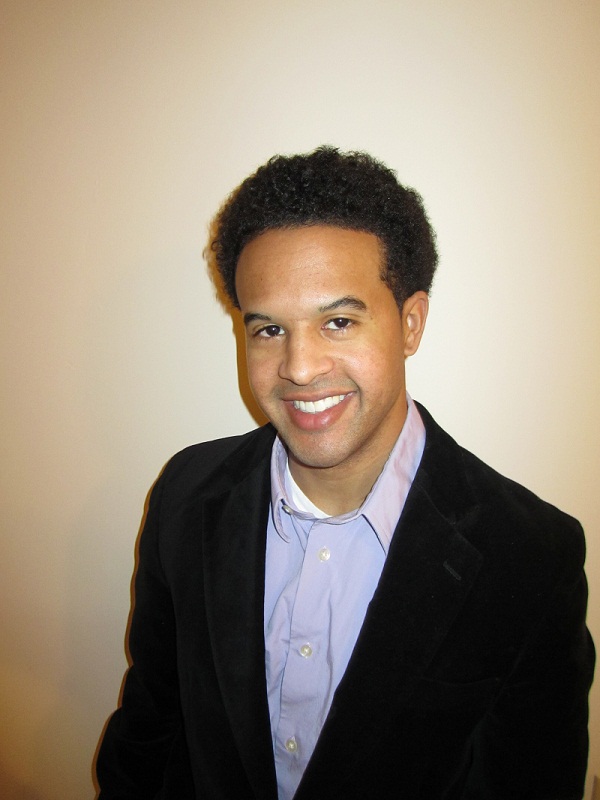[February is Black History Month. Over the course of the month UrbanCincy is attempting to share some stories of individuals from Cincinnati’s robust black community. The good, the bad and the ugly. Last week Alex Schutte discussed what it was like to grow up half-black. This week, Tifanei Moyer shares her thoughts about the racial dialogue in the Queen City -Randy.]
When I think about my experiences in Cincinnati in the context of the dark hue of my skin and kinkiness of my hair, a reel of uneasy experiences plays through my mind:
“You should have a better sense of humor,” my boss told me once after making a joke about people that are black.
“I’m glad I’m not black, because I like my good hair.” My roommate once informs me while she watches me struggle in the mirror with my locks.
“My brother has never dated a black girl, but he has dated trailer trash.” A coworker laughs. She only gets uncomfortable and confused when I ask her about equating the two.
“You’re a shoe-in. They need more black people to represent them on the other side of town.”
“The University of Cincinnati doesn’t graduate one out of three of their incoming freshman of African descent.” A counselor urged black freshman to use tutors to even the alleged graduation gap.
“She calls black people nigger all the time, Tifanei. Like it’s nothing! I don’t know what to do.” A friend (not from Cincinnati) told me about a native Cincinnatian that she roomed with.
“Tifanei, the GM is racist, everyone knows it. There is no way he’s going to let them hire you unless you want to be a ‘busboy’ or a bouncer.” A friend whispers to me at the door at a popular establishment downtown. “He wouldn’t even serve the UC football players until I promised him they were athletes.”
“During the riots my friend was just walking downtown and black people beat him up; he was just minding his own business!” A friend tried to explain the stemming of racial tensions to me.
“Why would you date a white man? Are you tired of black men? Did someone do something to you?” A black colleague confronts me after I introduce him to a boyfriend of the time.
I can’t say I’m a native to Cincinnati. I lived there for four years (18-22) and it’s honestly the longest I have lived in any one city. But while I lived there I never met anyone who denied Cincinnati’s pride and just the same, not a single person denied the segregationist structure that many prideful(!) Cincinnati communities embody.
Even with the substantial African-American Cincinnati history, it’s in my humblest opinion that the segregated communities noticeably affect the consciousness of race related issues and identity.
People will tell me that the “racism” I experienced was just ignorance and not in any way a representation of Cincinnati. But that’s just not true. When you grow up in a community where integrating with people who don’t look like you is not valued, then it affects how you identify and interact with others as an adult.
For a long time I felt that Cincinnati didn’t want to be “burdened” by any anecdote of race. But I started to realize, as I engaged more conversation, many people in Cincinnati don’t feel like they have a safe place to discuss race among a diverse group of people.
As I started to learn more about black history in America, it became my nature to probe people around me for their opinions. I had probing conversations with a lot of Cincinnatians who identified as being white. They would tell me they never discuss race to address social problems or economic-barriers because it wasn’t an obvious reality to them. It was a trend for people to tell me that they felt manipulated by the ‘race card’.
I met a lot of people who identified as black, that only wanted to cross racial community lines when they needed a job or wanted to start a career. I witnessed many of same people, myself including, silently struggling with their identity, because they were trying to understand the difference between “success and failure” versus “suburbs and urban areas” versus “white and ‘other’”. These are not easy conclusions to come to when homogeneous communities with clear socio-economic distinctions are what’s accepted. Cincinnati is where I began to understand how the notion of beauty is affected by having so much pride in a homogenous community, especially when one community is considered more successful and educated than the other.
I know I’m mostly a nomad at heart, but I fell in love with Cincinnati for many reasons – those reasons had nothing to do with race. The heartbreaking lack of racial-consciousness in Cincinnati will change, it has to, but it will take more than just hope. In my opinion it’s going to need a shift in values towards heterogeneous community building and a collective effort to address an individual responsibility that defies race. All hues of human color have to accept responsibility for the reality that we maintain by just “going about our business”.
It’s very, very hard to sum up a large and somewhat ambiguous topic, like being black. But, if I have to, I want to end by saying two things: 1)These are my very personal experiences, I am not Cincinnati, but my experiences are real. I don’t blame people I met for anyone’s struggle with beauty or success. I don’t think that one neighborhood is right or wrong about their interpretation of race and what it really means for someone’s livelihood. 2) I have lived in a lot of different cities around world. Cincinnati’s segregation is unique in a lot of ways, but it’s not unexpected in the framework of the U.S. There are many cities that claim to be successful, but are disturbingly segregated at the expense of their youth and social growth. I know all of the powerful minds behind UrbanCincy are influencing the changes of that.



